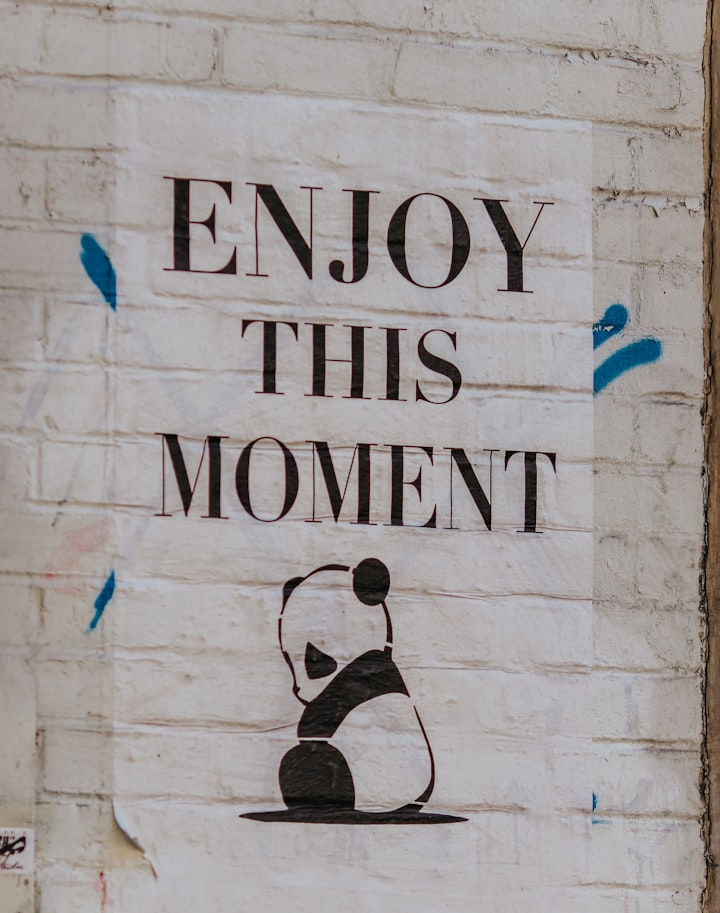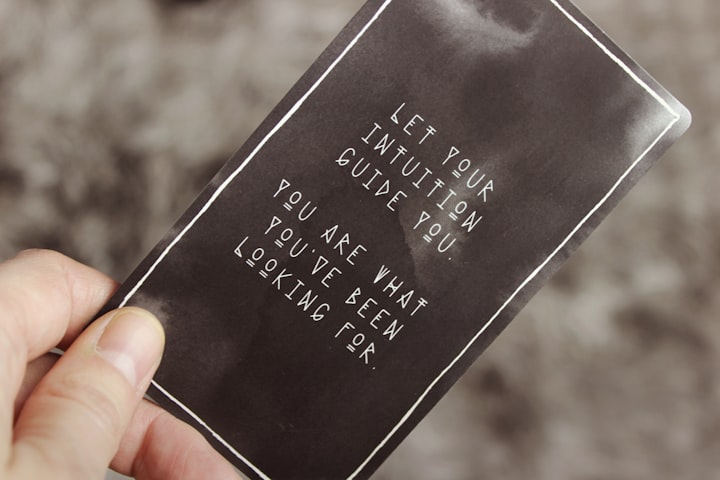Practical Tips and Strategies to Integrate Mindfulness into your Daily Routine
How you can find 5 minutes of mindfulness every day.
Moments of mindfulness helps us to come back to the present: to reconnect with our bodies and to fully engage with the world around us, instead of going on auto-pilot, or dwelling too much on the past or future.
Often times we don't recognize when to take these possible moments to ourselves, because doing so requires a baseline of present awareness that is difficult to establish, as we get pulled from one thing to another in our daily lives.
Strategies for finding Mindfulness: Transition Moments
Transition Moments
A key to bringing ourselves to present awareness so that we can practice mindfulness is identifying what is known as "Transition moments." These are moments that fill the space between different parts of the day, such as the commute home from work, or switching from one task to another, or going between two modes - like relaxing and studying. They can be moments which are no longer than a minute, like standing in line at the grocery store, or it could be the hours that stretch between two things, like dinner and bedtime. Nowadays however, it has become increasingly difficult to find these transitional moments. As the different parts of our lives become more executable without us ever having to leave our homes or desk, we have lost the sense of transition moments that otherwise happen naturally through the day, and we have to willingly recognize opportunities for them in our regular routines.
As you go through your day, consider when a transition moment should naturally be occurring, and use that to decide on where and when you may take a moment to shift yourself to live more presently and with intention.
There are many times and places throughout the day that you can set aside 5 minutes for mindfulness through transition moments:
- In your bed before you get up for the day
- In the shower or bath
- At your desk
- In your parked car before driving, or before going inside somewhere
- While riding public transit
- Somewhere outside in your nearby surroundings
- A quiet nook at home or at work
- In your house before your family awakes
In many of these situations, the moment is presented to us without us having to do anything, but we still must acknowledge and carry it out with full awareness. In other cases, perhaps there is no natural break, such as when we are focusing on a work project over a long stretch of the day. Breaking up that long stretch by "inserting" transition moments throughout gives opportunities to refresh your brain and body, and makes it easier for us to clear our head at the end of that long stretch. We often need an additional aid in those situations, such as a Pomodoro timer, to remind us to take those breaks.
The Fight against Fixation
Deliberately recognizing when transition moments should naturally occur throughout the day are a true beacon of shifting to mindfulness, and helps to prevent us from fixating on one thing for too long. It could prevent someone from spending the whole day going down a Youtube rabbit hole, or window shopping online. It can keep us from sinking into the couch after work for longer than a moment's rest. It can help us be in the best mental state for the experiences that we share together, so that we do not spend that precious time with others instead processing the influx of tasks or information that flood our minds the moment that we were pulled out of a fixation. Recognizing transition moments, and approaching them with mindfulness, allow us to act with a clear sense of present awareness from one thing to another.
Practical Techniques for Mindfulness
Meditation
If recognizing these transition moments and acting deliberately is the first step to mindfulness, then taking just 1 to 5 minutes to meditate in these moments is the next. It is these transition moments where we can re-calibrate, reset our intention, or destress. We can achieve this no matter where we are through meditation. Just 5 minutes of meditating everyday can improve stress, your mental health, and your physical health. It can be extremely helpful for when you are feeling burnout, needing a confidence boost, or want to change how you interact with others.
Over the past decade of immersing myself in yoga practice & theory, I have made a mental note of every meditation or breathing prompt that has helped me de-stress or recalibrate. The following list is is a mix of breathing techniques, grounding techniques, prompts to let go of muscle tension, prompts to clear your head, and ways to re-calibrate your intentions.
Print or copy your favorites from this list to somewhere that you want to take transition moments to yourself, such as in your workspace, in your car, or by your bed.
Here are some Meditation Prompts for you to try:
- Tune your ears to your surroundings. Acknowledge every sound, simply observing the natural flow of the day. Now tune your ears inward, listen and observe the various states that flow naturally in your mind and body.
- Feel the air around the edges of your nostrils, as you inhale through the nose. Follow the air through your nose, down to your lungs, and with every breathe, wherever you feel a sense of expansion in your body take place.
- Think of an affirmation, like "I am loved." Repeat it in your head 3 times. Send it down into your heart, and plant it like a seed. Let that seed take root.
- Close your eyes and mentally scan your body for anywhere that feels like a warm, shimmering light. From there, imagine all your cells dancing with excited energy in the form of that light. Make a field of shimmering light around you that makes you feel warm and protected.
- Try the box breathing technique. Inhale for 4 seconds, hold for 4, exhale for 4 seconds, hold for 4, repeat.
- Close your eyes. Imagine every thought or feeling as a cloud: as it moves overhead you observe it passing by, without having to see it as negative or positive. It just blows away with the wind.
- Lie on the ground. Let gravity root you into the earth, like you are a pebble lodged in a river bed. As water rushes over you, let it smooth away any tension.
- Sit tall like you are pressing a button with your head. Inhale deep, and hold it as you relax your shoulders. let out a big exhale through the mouth.
- Light a candle. Gaze at the flame with eyes relaxed. Close your eyes and visualize the flame. Now visualize yourself achieving happiness, following your own light.
- Perform a mental body scan. Name each body part from head to toe in any sequence you prefer. Relax them as you go.
Worth a Mention: Gratitude Journalling
There is something about practicing gratitude that really helps us root into our awareness of each present moment. Gratitude journalling is as simple as listing the things in life you are grateful for, either first thing in the morning, or at the end of the day, or at both times. It provides the same refreshed sense of clarity that meditating does, which is why it is certainly worth a mention in practical techniques for attaining mindfulness.
Keeping a gratitude journal by your bed, or in a cozy nook at home, is the best way to keep to this habit - or, you can use an app. While it is easy to find many apps that have additional features available with purchase, you can simply use a notes app, text yourself, or - if you have an Apple iOS - a free app from imoblife called Gratitude meets the needs of gratitude journalling.
Being Mindful Beyond Transition Moments
The mindset of finding transition moments provides a clear direction, but you can also practice mindfulness by keeping goals in mind, such as:
- Mindful eating
- Spending more time in Nature
- Limiting Screen time
We give up a lot when we give away ourselves to acting in auto-pilot, and with the everyday functions of our modern society, it is far too easy to do so. With all that we can achieve by being more mindful, I hope you take in this article with the goal of executing mindfulness or meditation more regularly in your own life.
About the Creator
Kali Mailhot
hobby poet always looking for new things to write about.







Comments (7)
Awesome Article ❤️📝💯‼️
Fantastic self help and advice!!! Loving it!!!💖💖💕
Great story to write about. FYI🥰🥰🥰
Really liked this especially the section on meditation 🧘♂️
I'd never used a Pomodoro timer before! Interesting. In yoga and in therapy, I've had exposure to many of the prompts and recommendations you gave but there were definitely some new ideas! thank you! I agree with your point about it being harder to find the Transition moments - I often feel that my whole day has gone by and I can't remember where or how or what I did.
Mindfulness is so important and I'm always looking for ways to improve! This article is super well done and informative - I will definitely be referring back to it! I loved the idea of Transition Moments. I definitely need to try that! ❤️
I love the focus on Transition Moments. I'm big on journaling too (although I used to be so stubborn about it) but often say my gratitudes more so than write them all down. I hope you write more articles. You give great advice!